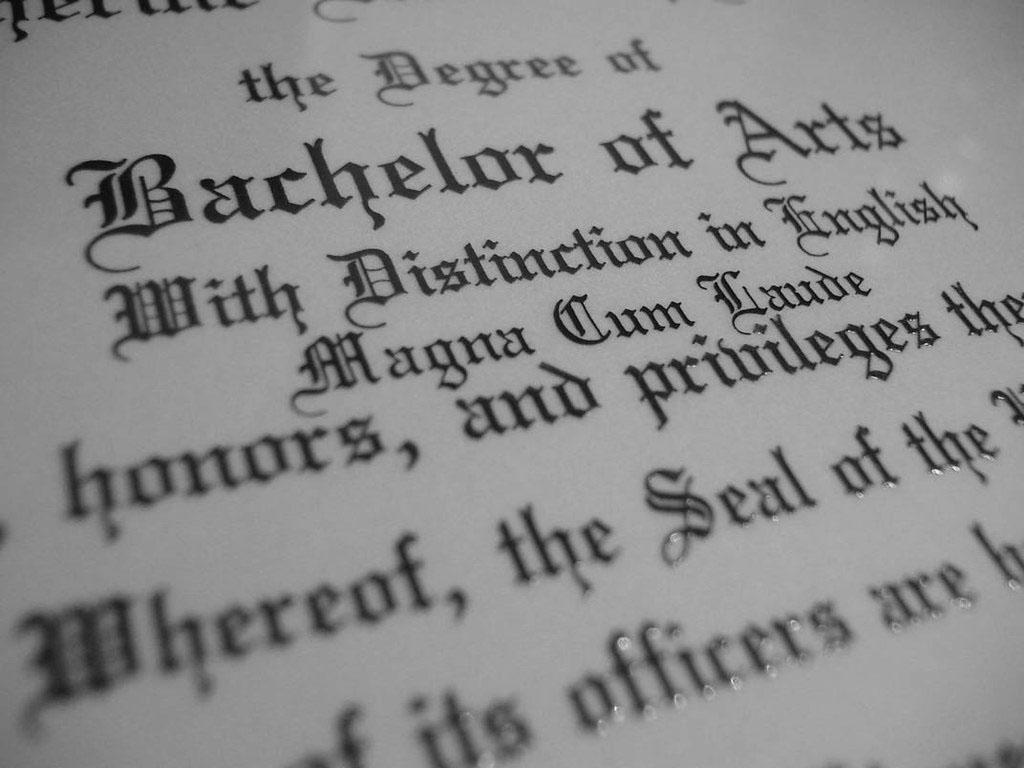Image from Creative Commons
Image of a Bachelor of Arts degree.
Less than five miles away from NC State’s campus lies an historically Black college by the name of St. Augustine University (SAU). In Dec. 2023, St. Augustine’s Board of Trustees fired the university’s President Christine McPhail. Following this incident, the Southern Association of Colleges and Schools Commissions on Colleges (SACSCOC) removed the university’s accreditation. Although the SACSCOC voted to strip the university of its accreditation, St. Augustine remains accredited due to the appeal process. This causes concern for students and hinders the stability of the leadership within the university.
Unfortunately, this is not the first time this historically Black institution has been placed under probation. In 2016, SAU was placed under probation for financial instability lasting until 2018. Soon after, McPhail became their thirteenth president in February 2021. The following year, SAU was placed under probation once again, at risk of losing their accreditation.
The impact of losing accreditation will eventually strip federal financial aid from the student population, which surely will stimulate a number of negative effects. Ultimately, this creates a bad reputation for the university which will affect their ability to attract new faculty, staff and students.
SACSCOC issued the Disclosure Statement on Dec 5, 2023. SAU is in the process of appeal, which must be submitted by the university on Jan 21. The statement revealed the University’s failure to comply with seven different regulations and requirements, four being related to financial matters. The university has since decided to appoint Dr. Marcus H. Burgess into the role of Interim President.
Beginning his fresh start at SAU, Burgess told WRAL News that he is, “committed to ushering in a new era of stability and growth for the university, ensuring its continued accreditation and fostering a culture of transparency and collaboration.” Burgess is currently in a temporary role but hopes to pursue this position full-time. The question is, is he fit for the task?
It is a necessity for educational institutions to have stability to create sustainable and productive learning environments. Instability has been knocking on the doors of many Historically Black Colleges and Universities (HBCUs) in recent years. In fact, in 2023, there were more than 20 presidential vacancies among the nation’s 101 HBCUs. Turnover can close doors to those who are not suitable to lead communities and open up opportunities for new faces and fresh ideas with a better vision.
There has been a surging trend of presidential departures among America’s HBCUs. In Nov. 2023, 18 HBCUs lacked a permanent president. Of those listed, two come from our home state: North Carolina A&T State University and Winston-Salem State University. These universities joined St. Augustine University recently, totalling three North Carolinian HBCUs with interim or temporary presidents.
This decline is observed at large in educational institutions regardless of whether they are historically Black or not. This fact, however, does not mitigate the high turnover rates that are more significantly observed in Black colleges. There have been a growing number of studies on the absence of permanent leadership or decline in average tenure completion in our education system.
In the wake of Harvard President Claudine Gay’s resignation, there has been a growing attention to presidential vacancies.
St. Augustine’s leadership has seemed to have a tension-filled relationship with their own Board of Trustees. Christine McPhail was not the first member to contest her removal. In October of last year, SAU also fired their head football coach, who is claiming it as an “unjust” decision. This comes only four years after four former and high-ranking employees sued the institution for wrongful termination. The most concerning aspect of this is not simply the amount of terminations, but the contentious relationship between SAU’s faculty and board.
There are certainly commonalities between universities across the nation, but the complexities of each situation make it difficult to define one concrete issue. Terrell Strayhorn, Director of Research at the Center for the Study of HBCUs at Virginia Union University, has made his studies on this matter public. He emphasizes that there is no simple answer as to why HBCU turnover has experienced such a spike. He includes, “declining or shrinking enrollments, vacancies in key positions, inadequate facilities, fiscal issues, and Board tensions,” all as factors that impact turnover.
The underfunding of HBCUs has also long been a common topic discussed in relation to the problems that these institutions face. Interim President, Dr. Marcus Burgess, stated in an interview with WRAL News that “from a financial standpoint, it’s some dire times right now. We’re having to make some tough decisions on who we pay and how we pay them.” Money is not the only issue that SAU is facing, but it is evident that financial struggles cause burdens on the institution as a whole.
Hiring new presidents is not the only solution for SAU or any HBCU facing high turnover rates. Framing a solution has to also consider those in the highest positions of power, who ultimately make decisions regarding the leadership at each university. Strayhorn advises the Boards to “promote professional development for your CEO, offer leadership coaching, career counseling, and empower them to be part of conversations about the future of the institution.”
Collaboration between the Boards and staff of these institutions is necessary. Especially in creating a transparent atmosphere where communication is frequently valued. This collaboration will reflect well in the community and allow leaders to foster stable futures and relationships for students, faculty and staff.






